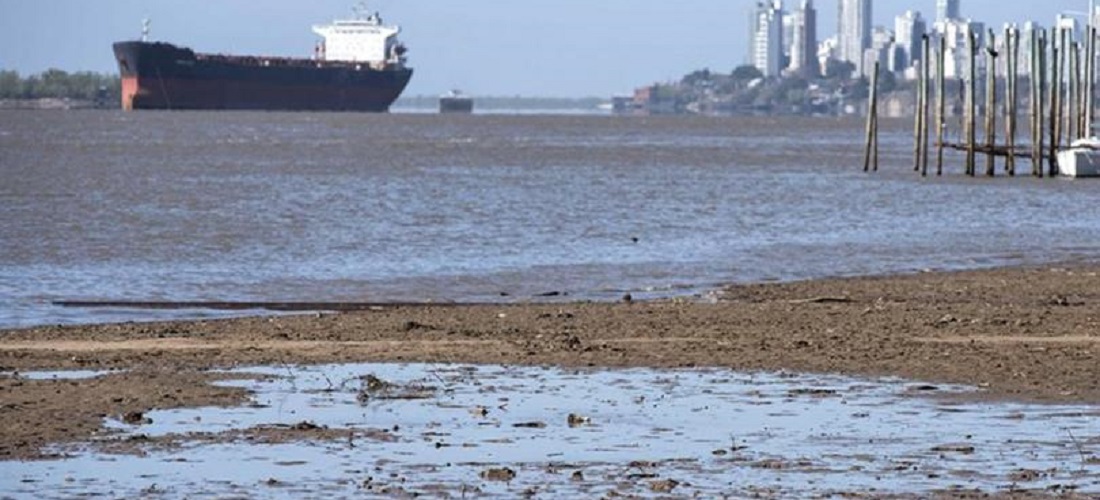
Paraná river’s historically low water level restricts Argentina’s exports further
Apr, 08, 2020 Posted by datamarnewsWeek 202016
With the Paraná River’s water level being at its lowest level in a decade, this is forcing Argentina to decrease the load carried by vessels. This comes at a time when the country’s shipments were already facing problems due to the impact caused by the coronavirus pandemic. The Paraná River is the main export route for Argentine grains and by-products, which are transported from the ports and processing units of the Rosario pole, one of the largest in the world, to the Atlantic Ocean.
“The vessels (in Rosario) are still loading. What happens is that instead of embarking a load that would be normal at this time (about 34 feet deep), today they are loading at 31 feet,” said the manager of the Chamber of Port and Maritime Activities, Guillermo Wade. Measured in tons, these three feet represent a decrease of about 7,500 tons of cargo on a Panamax-type vessel, explained Wade. The vessels usually leave Rosario with about 50,000 to 55,000 tons in the hold.
According to a report by the Rosario Stock Exchange, the lack of rain in southern Brazil and in affluent areas of Paraná meant that the river level in Rosario was at just 1 meter, something that had not been recorded for almost 11 years.
Source: Reuters
-
Ports and Terminals
Feb, 15, 2023
0
Record corn exports cause 50% growth in handling at the Port of São Francisco do Sul
-
Ports and Terminals
Jan, 17, 2022
0
The Pecém Complex’s natural gas thermoelectric plant will cost R$ 5 billion
-
Fruit
Sep, 30, 2022
0
Cerrado should become Brazil’s fruit growing hub
-
Meat
Dec, 15, 2023
0
Russia renews quotas for beef and poultry imports from Brazil

